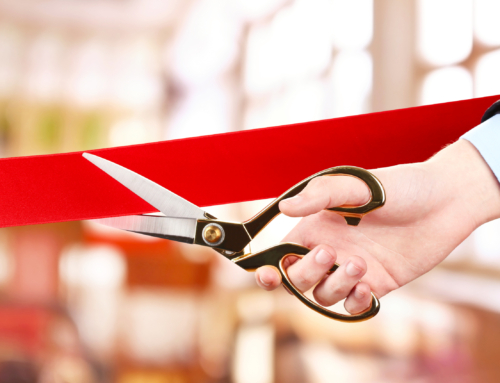Momentum Physical Therapy was proud and excited to be featured on Fox News last week. They did a piece on prepping for the Rock ‘n’ Roll Marathon coming up in November.
Below is more information about the stretches discussed on the interview above.
Racing with Momentum
Special to NSIDE
Making a decision to run a marathon is not for the faint of heart. Whether it’s a half-marathon or the full 26.2 miles, the endeavor must come with a plan to prepare and train, then to accomplish the feat when race day arrives. Like most things, it is good to begin with the end in mind. Determine why you want to run a marathon in the first place.
If you are running the Rock ‘n’ Roll Marathon in San Antonio this November, you have more than likely already made the decision to take part in the uphill and downhill components (both figuratively and literally) that your participation entails. John Malfer and Chad Elms, both runners and physical therapists, have had their fair share of races and have also seen their fair share of runners in their clinics at Momentum Physical Therapy & Sports Rehab.
“We usually see race participants come in just a couple of weeks before the marathon takes place,” said Malfer. “At that point, it’s usually too late to fully recover from an injury. Too many people do not create a program that includes stretching, running and alternative exercises.”
There are many elements that are important in training, both tangible and intangible. Selecting the proper shoes and attire, eating in a nutritional way and treating your body right all fall into what should be on your list once you decide to walk or run 13.1 or 26.2 miles respectively.
Be sure you have a pair of running shoes that is properly selected and fitted based on your foot type. Take the time to go to a store that specializes in running, as most of their staff is trained in evaluating your foot type and knowing which shoe works best for your foot type – might change to the structure of your foot. You may spend a little more money and time than if you picked out your shoes at a local
sports store, but the proper shoe will go a long way to prevent injuries as you train for the race.
Injuries usually occur when individuals are not properly training and preparing. Stretching is one thing that runners, joggers and walkers must commit themselves to. It is necessary to warm up and stretch for an adequate amount of time (60 to 90 seconds per stretch to ensure that the muscles are warm) before going on runs.
Some of the stretches that Malfer and Elms recommend to their patients include:
Hamstring Stretches: The hamstrings are a group of four muscles that run down the back of the thigh. The hamstrings originate on the ischia (the bones you sit on) and insert just below the knee. They not only help you in bending your knee, but they can also play a role in helping you to straighten your hips.
This is an important muscle to keep flexible because of its attachments to the pelvis. If you have tight hamstrings, it not only puts an abnormal pull on your low back, but it also places extra stress on your low back with activities such as squatting and bending.
- To perform this stretch in standing, find a step, curb, step stool, or anything you can put one foot on. Simply find an object that is about 6-12 inches high.
- Starting with your low back in neutral, put your left heel up on the step stool. Bend forward at the waist, but make sure to keep your back in the neutral position as you reach forward.
- Do not allow your low back to bend during this stretch, or you will not be isolating the hamstring and will not get an effective stretch on the muscle.
Quad Stretch: The quadriceps (quads) muscles are a group of four muscles that run down the front of your thigh, where they form the quadriceps tendon, which covers the knee cap and inserts on the front/top part of the “shin.” Though a few of the quad muscles have additional functions, the basic function of the quads is to extend (or straighten) the knee. The quads are an important group of muscles to stretch for several reasons, but mainly because they are a very powerful muscle group that can exert a lot of unnecessary force on the knee if they are tight.
One of the great things about the quad stretch is it requires no equipment, and it’s easy to do no matter where you are.
- To stretch the right leg, start out standing, then grab the front of your right ankle with your right arm. Use your right arm to pull your right heel up toward your bottom.
- Only pull the heel as far as you need to feel a light stretch in the front of your thigh, and make sure you do not allow your low back to arch.
- Also, make sure your right knee is pointing straight down toward your toes and that your right leg stays close to (or touching) your left throughout the stretch. In other words, do not allow your right leg to point to the side as you stretch.
- As with all of your stretches, hold this stretch for 30 seconds and do 3-4 sets on each leg.
Iliotibial (IT) Band Stretches: The IT Band is a thick, very strong structure that runs down the entire side of both of your legs. It is a little controversial as to if you can actually stretch the band itself (due to its thickness and strength), but we do know you can stretch the muscles and fascia that tie into this band. I will show you three different stretches for the IT Band. Do not attempt these stretches if you have had a hip replacement.
- Begin in a standing position.
- For stretching your right side, stand about two feet away from the wall, with your right side closest to the wall. With your right hand on the wall for balance, cross your left foot in front of your right and push your right hip toward the wall.
- Make sure to keep your upper body straight as you “push” your right hip toward the wall. In doing this, you should feel a pull on the top, outside part of your hip.
- Repeat on the left side.
“Many of the runners we see in physical therapy neglect stretching all together, which sets them up for muscle imbalances,” said Elms. “Muscle imbalances occur when certain muscle groups get tighter or stronger than the opposing muscle groups. This puts unnecessary stress on joints, muscles and ligaments, and it decreases the body’s efficiency during movement.”
Following a regular flexibility program can help prevent injuries caused by muscle imbalances. Most marathon runners’ trouble areas are around their knees. This can be contributed to by improper stretching or muscle imbalance. Many individuals will do a wealthy amount of quad weight lifts, but ignore their hamstrings, or perhaps they will focus on working out their calves, leading to imbalance of
the other muscles that are not included in the weightlifting workouts.
“Slow and steady really does win the race,” said Elms. “Another misconception is that you should reach your running goal as quickly as possible. In reality, when training for a race, it’s important not to ramp up speed and mileage too quickly.”
Many runners will overtrain, as opposed to undertraining. In order to avoid this, vary exercise patterns, cross-train and include weight training – high repetition, lower weight exercise is best.
“Follow your training program,” said Malfer. “Don’t go straight from your couch eating Doritos to running five miles.”
Most importantly, train as you will race. More specifically, if you plan to rehydrate or take in nutrition at rest stations on the day of the race, you need to do the same as you train.
As an example, if you do not hydrate regularly as you train, it is not a good idea to hydrate every few miles during the actual race, as your body is used to the hydration and nutrition you used while you trained. Throwing your body a curveball on the day of the race will not be good for your overall outcome.
When race day arrives, the first few miles are key. Begin the race a little slower than your normal pace in training. While this seems counter-intuitive, there are many factors on the day of the race that can affect you at the beginning of the race. So, start about thirty seconds slower than your normal pace for the first few miles, then ramp up to your usual pace after that.
And finally, choose to be happy on race day. Though it may not seem imperative, it is scientifically sound.
“After all, our bodies are more relaxed when we’re smiling, and as we work out, our endorphins are rising,” said Elms. “Endorphins make you happy, which will help you to keep a positive attitude and maintain your momentum throughout the race.”
Let’s race, San Antonio!






